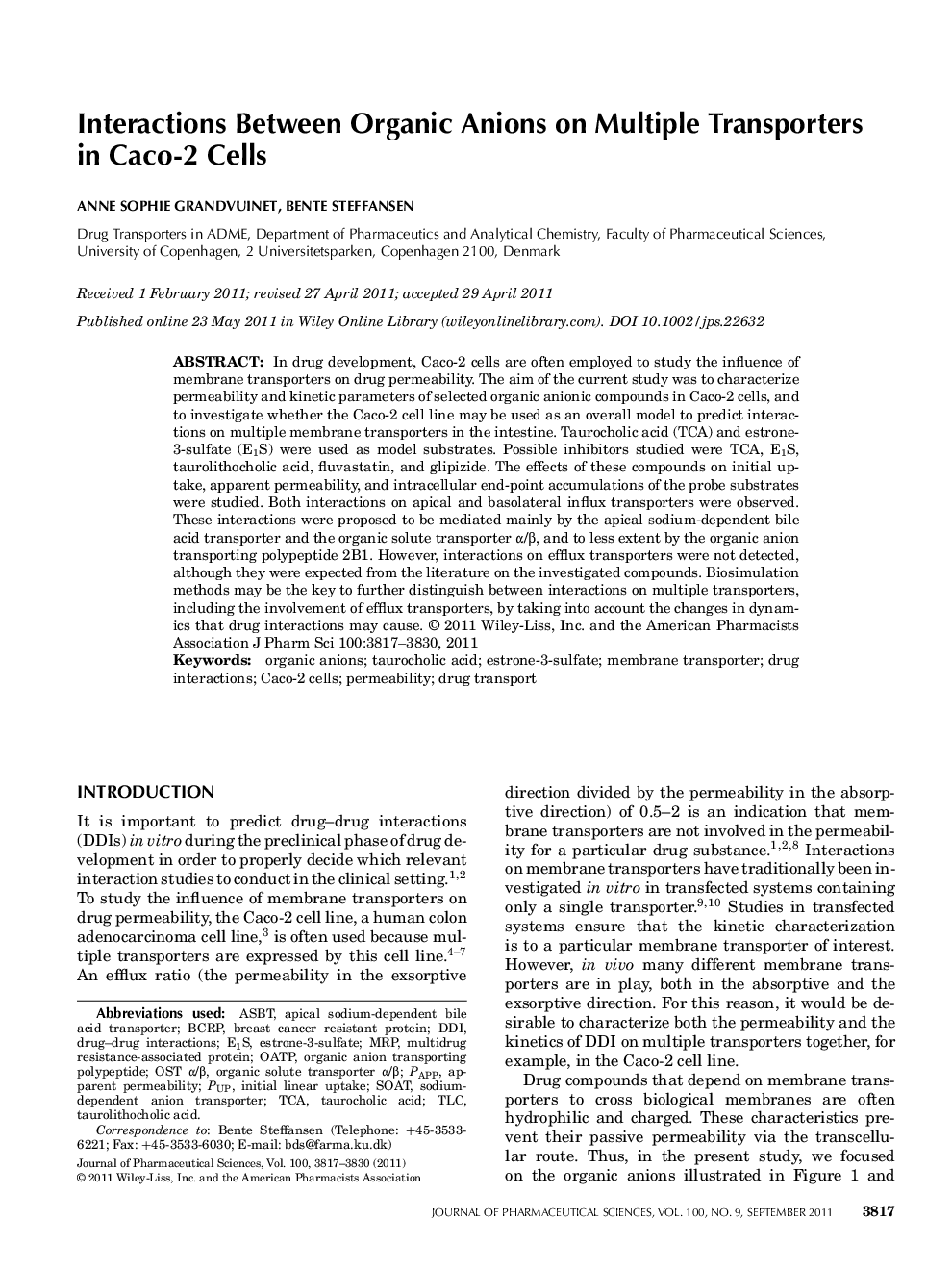| Article ID | Journal | Published Year | Pages | File Type |
|---|---|---|---|---|
| 2485487 | Journal of Pharmaceutical Sciences | 2011 | 14 Pages |
In drug development, Caco-2 cells are often employed to study the influence of membrane transporters on drug permeability. The aim of the current study was to characterize permeability and kinetic parameters of selected organic anionic compounds in Caco-2 cells, and to investigate whether the Caco-2 cell line may be used as an overall model to predict interactions on multiple membrane transporters in the intestine. Taurocholic acid (TCA) and estrone-3-sulfate (E1S) were used as model substrates. Possible inhibitors studied were TCA, E1S, taurolithocholic acid, fluvastatin, and glipizide. The effects of these compounds on initial uptake, apparent permeability, and intracellular end-point accumulations of the probe substrates were studied. Both interactions on apical and basolateral influx transporters were observed. These interactions were proposed to be mediated mainly by the apical sodium-dependent bile acid transporter and the organic solute transporter α/β, and to less extent by the organic anion transporting polypeptide 2B1. However, interactions on efflux transporters were not detected, although they were expected from the literature on the investigated compounds. Biosimulation methods may be the key to further distinguish between interactions on multiple transporters, including the involvement of efflux transporters, by taking into account the changes in dynamics that drug interactions may cause. © 2011 Wiley-Liss, Inc. and the American Pharmacists Association J Pharm Sci 100:3817–3830, 2011
